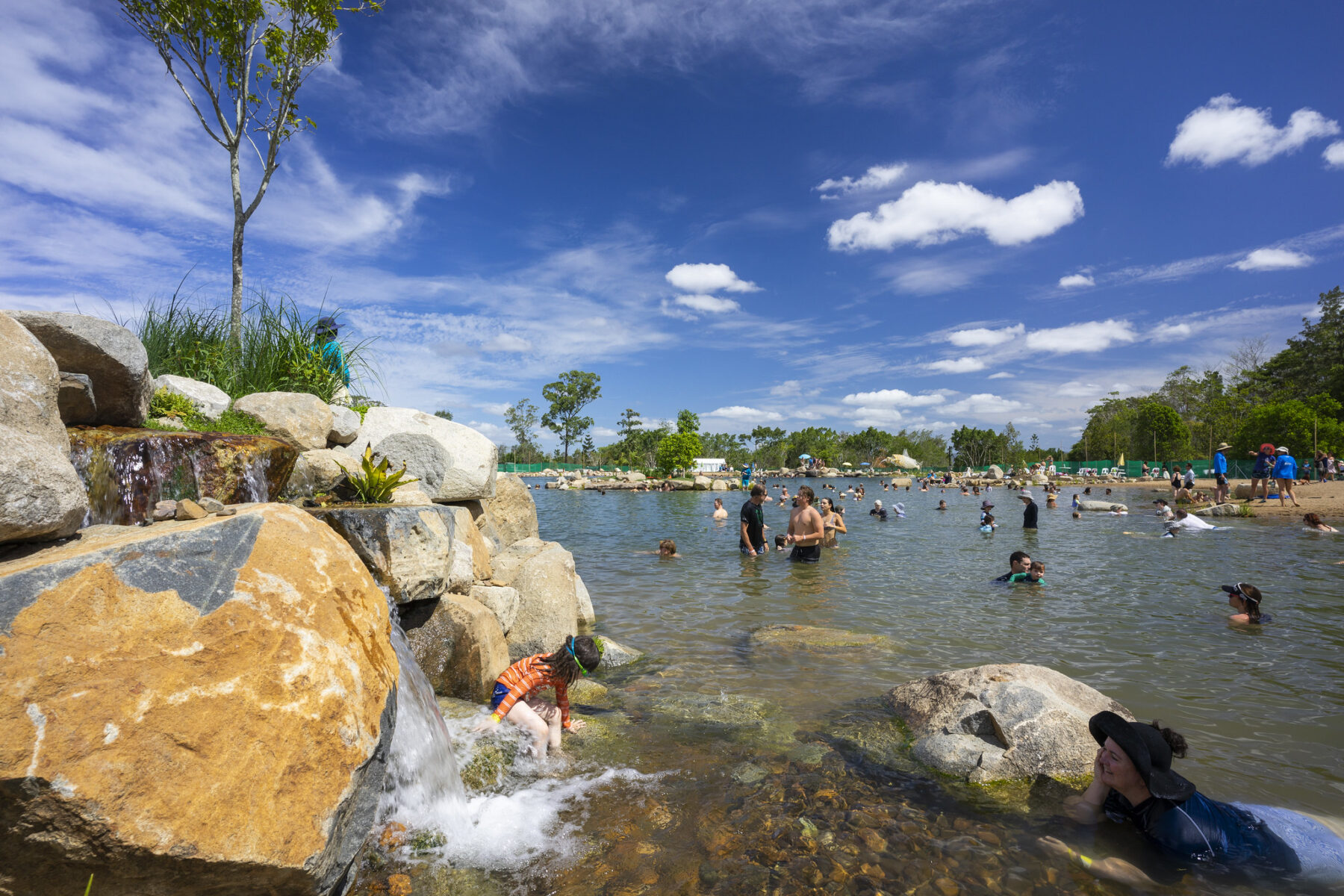As crowds of festival goers cooled off in Woodfordia’s Lake Gkula during this summer’s event, most were unaware they were sharing the water with one of our country’s most fascinating species – the lungfish.
Known as Australia’s ‘living fossil’, the Queensland lungfish (Neoceratodus forsteri) is our closest living fish relative and is considered to be a surviving link in the evolutionary chain between fishes and amphibians. Not only does the lungfish have gills, but it can also breath air using one fully functioning lung.
The species are believed to have existed for around 400 million years, and fossils indicate the Queensland variety has changed very little over the last 100 million years.
Native to south-eastern Queensland’s Mary and Burnett River systems, the once abundant species is now listed federally as vulnerable.
So how did these remarkable creatures come to be living in a man-made lake created on one of the biggest festival sites in Australia?
The 202ha Woodfordia site in Queensland’s Moreton Bay region may host more than 120,000 people every year during the famous Woodford Folk Festival (and other events), but the organisers also have a strong commitment to the environment.
Managed by Woodfordia Inc. (a not-for-profit organisation and recognised charity) the land – once a degraded rural property – has been restored and regenerated over the last three decades. With more than 100,000 trees, plus understorey, now providing habitat for local wildlife, it is now also a registered Land for Wildlife site.
The latest edition to Woodfordia is Lake Gkula, named after one of the Traditional Owners’ principal spokespersons. Uncle Noel Blair is a Jinibara man whose name in language is gkula, meaning ‘koala’. The lake was completed three years ago, after feedback from festival patrons indicated a need for somewhere to swim to escape Queensland’s summer heat.
“It gets extremely hot, it’s oppressive, people need a place to cool off,” explains Patrick Handley, the lake’s creator.


But, being Woodfordia, this was never going to end up being just any ordinary swimming spot, which is why Patrick was chosen for the task. A horticulturist with a passion for ecology and ecosystems, Patrick’s goal was to build a fully endemic ecosystem, “as native as we could get it,” he says.
The result is a lake with natural wetland filtration. Powerful pumps and nanobubble technology also maintain a constant flow and high levels of oxygen, which purify the water like kidneys, while beneficial bacteria and microorganisms keep pathogens at bay. All this means the lake is completely chemical-free.
This makes Lake Gkula not only a natural setting to swim in, but a great place for animal and plant species to thrive. It was, as Patrick says, “a no-brainer” that the habitat would be made home to native and endemic species only.
To achieve this, Patrick consulted experts and self-researched the environmental conditions needed by certain native and endemic species, then he set about making conditions just right. Soon, the lake was home to an ecosystem of more than 18 native fish and crustaceans, as well as a host of other animals – including turtles, frogs, lizards and water birds – living among more than 8000 plants, including native water lilies.

The lake’s fish species include Pacific blue-eye, Agassiz’s perchlet, gudgeon, tandanus catfish, rainbowfish and Mary River cod.
And, of course, lungfish.
Being a protected species, it is illegal to take lungfish from the wild, so three were donated to Woodfordia by a licenced local breeder.
“The release of the lungfish was so incredible, it was such a fantastic day,” says Patrick. “It’s been a real dream to have this happen – I’ve always wanted to do this.”
For the lungfish to thrive in their new environment, Patrick designed habitat space specific to their needs. Not only do they prefer to inhabit deep water, and need plenty of room to move and hunt, they also need places to hide when the lake is full of people.
“I created a habitat zone for the fish. They can enter it and be safe from predators and people. There are hollow logs to lie in, and we do see them get up in there,” he says.
“My main concern was making sure we had enough to feed them – but they’ve got plenty of food. They eat the snails in there, and they ambush prey when they can, so there’s a few smaller species – like the shrimp – they can get hold of. They also feed on the eelgrass.”
Three years on from the introduction of the lungfish into Lake Gkula, Patrick says they’re doing well. “I go and look at them every three to four months and they’re really healthy. They’re growing really, really quickly. They went in at 25cm, and they’re at least a good 75cm now.
“I identify them by their tail patterns, and I know there’s definitely two still there. When you look at them, they’re just so fat and happy.”
Looking to the future, Patrick says the ideal scenario would be for the lungfish to breed. However it’s too soon to identify the gender of the lungfish.
“We have to wait and see,” says Patrick. “If we had a breeding pair in there it would be incredible. But even if we do, it will be up to 15 years before they get to breeding size.”
In the meantime, Patrick just wants people to appreciate these unique animals.
“A lot of people still don’t know that they’re there,” he says. “So for people to go and appreciate the fact that they’re swimming with lungfish in semi-wild conditions would be incredible.
“I’ve had some great experiences with these lungfish. I think it’s going to be a wonderful thing to see and hear them at night time. When they’re older they will come up to the surface and suck at the air – apparently they sound like dolphins.
“That would be amazing. Absolutely amazing.”

